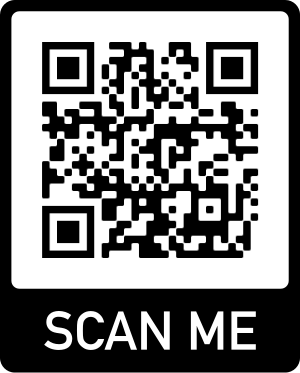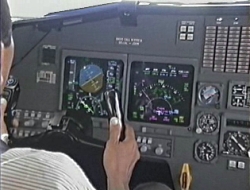With no new information but a 24-hour news cycle to fill, reporters have made themselves the star of the story for the missing Malaysia Airlines passenger jet, written by ABC's Stephen McDonell.
Based on article by Chris Goodfellow about Malaysia Airlines Flight MH370.
Based on article by Chris Goodfellow about Malaysia Airlines Flight MH370.
He
was a very experienced senior
Captain with 18,000 hours.
“The left turn is the
key here”, said Captain Chris Goodfellow.
It was
an interesting approach, but journalists around the world have been stuck on a
supposed “erroneous” abrupt turn to West.
No,
definitely not, it wasn’t an erroneous or non-intentional turn towards West.
Following
is the Ipsis Litteris procedure for diverting in case of Depressurization or Rapid
Descent (from B777-200ER Flight Crew Operations Manual)
Loss of Pressurization
Turn 90 degrees perpendicular to track and commence an Emergency Descent
to FL140 / 14,000 feet or MEA (Minimum En-Route Altitude), whichever is higher. Declare an emergency and divert if necessary. Be aware of high terrain on many ETOPS routes, including Greenland, Iceland, Canada, Alaska, and Russia. Selection of the TERR button will enhance situational awareness in high terrain areas.
Loss of Pressurization
Turn 90 degrees perpendicular to track and commence an Emergency Descent
to FL140 / 14,000 feet or MEA (Minimum En-Route Altitude), whichever is higher. Declare an emergency and divert if necessary. Be aware of high terrain on many ETOPS routes, including Greenland, Iceland, Canada, Alaska, and Russia. Selection of the TERR button will enhance situational awareness in high terrain areas.
On FMC:
Select the desired option, and then:
DIVERT NOW Key (6R) ...........................................................................PRESS
EXEC Key ...............................................................................................PRESS
Check that the now modified route to the new destination changes to active
route (solid magenta line) on the ND. [Navigation Display]
Note: Using the aforementioned procedures diverts the aircraft to the
ALTERNATE AIRPORT – not – to a navigation facility. It is then
necessary to correct the route and arrival as required to comply with
subsequent ATC clearances, arrival, and approach considerations.
ALTERNATE AIRPORT - as shown on FMC (CDU screen).
It is very, very important to divert to ALTERNATE AIRPORT shown by FMC because the computer has already calculated what is the best airport option for landing the plane within the Actual Landing Weight.
It is very nice for flight crew since the normal flight is in progressing, the FMC is calculating the actual aircraft weight and pointing out (*) the best runway on both left and right side of the flown route to land the plane in case of an emergency. It is a good help for that pilot's concern about 'where to land in case of emergency". The pilot only needs to press a button (LSK, or RSK) for selecting the best airport suggested on CDU screen. The best airport is the one with longest airstrip.
Pilot's mind is always thinking of "where to land in case of an emergency". That is the first concern in aviation course.
Select the desired option, and then:
DIVERT NOW Key (6R) ...........................................................................PRESS
EXEC Key ...............................................................................................PRESS
Check that the now modified route to the new destination changes to active
route (solid magenta line) on the ND. [Navigation Display]
Note: Using the aforementioned procedures diverts the aircraft to the
ALTERNATE AIRPORT – not – to a navigation facility. It is then
necessary to correct the route and arrival as required to comply with
subsequent ATC clearances, arrival, and approach considerations.
ALTERNATE AIRPORT - as shown on FMC (CDU screen).
It is very, very important to divert to ALTERNATE AIRPORT shown by FMC because the computer has already calculated what is the best airport option for landing the plane within the Actual Landing Weight.
It is very nice for flight crew since the normal flight is in progressing, the FMC is calculating the actual aircraft weight and pointing out (*) the best runway on both left and right side of the flown route to land the plane in case of an emergency. It is a good help for that pilot's concern about 'where to land in case of emergency". The pilot only needs to press a button (LSK, or RSK) for selecting the best airport suggested on CDU screen. The best airport is the one with longest airstrip.
Pilot's mind is always thinking of "where to land in case of an emergency". That is the first concern in aviation course.
I
believe something very unusual and dangerous has happened to the aircraft few
minutes before 17:22 (UTC).
Palau
Langkawi runway 03 threshold [06° 19' 33"N, 099° 43' 33"E] with 12500
feet long (3810 m) is the best option for landing a B777-200 on
emergency procedure at night (within the Maximum Landing Weight range),
for that plane had only flown 40 minutes after takeoff.
All
landings must be on 03 runway threshold, in Palau Langkawi, it means the IFR
flight approach procedure will be over sea as depicted below for aviation
laymen in first image and for pilots in second one:
Supposing another
problem has emerged as the aircraft approached to Palau Langkawi, that airport is
opened for landings only between 2300 and 1500 UTC (07 and 23 Local Time).
It
was about 17:45
UTC.
Radar
Service at Palau Langkawi airport is available from 01:00 to 09:00 UTC
(09:00 to 17:00 LT).
Malaysian Airlines Handling is available from 22:00 to 14:00 UTC (06:00 to 22:00 LT).
Approach Air Traffic Control Communications is available from 23:00 to 15:00 UTC (07:00 to 23:00 LT).
Operation beyond 15:00 UTC is required 8 hours prior to requesting for landing.
Depending on Chinese into English translation the phraseology published by The Telegraph journal is out of ICAO recommendation for radiotelephony communication in aviation.
Flight MH370's Radio Communications had been lost as soon as someone inside cockpit said farewell to Kuala Lumpur ATC:
Malaysian Airlines Handling is available from 22:00 to 14:00 UTC (06:00 to 22:00 LT).
Approach Air Traffic Control Communications is available from 23:00 to 15:00 UTC (07:00 to 23:00 LT).
Operation beyond 15:00 UTC is required 8 hours prior to requesting for landing.
Depending on Chinese into English translation the phraseology published by The Telegraph journal is out of ICAO recommendation for radiotelephony communication in aviation.
Flight MH370's Radio Communications had been lost as soon as someone inside cockpit said farewell to Kuala Lumpur ATC:
"all
right, good night".
Pilots
should not say "all right" in any situation.
To
bid farewell, we are very used to repeat all radio frequency numbers
provided by air traffic controller, on which we must call the next ATC controller
as transferring communications between ATC's sectors, for example:
"Roger, one, two, five, decimal,
three, two, five, good night", or
"Wilco, one, two, five, decimal,
three, two, five, good night".
Roger,
means “I have received all of your last transmission.”
Note:
Under no circumstances to be used in
reply to a question requiring “READ BACK” or a direct answer in the affirmative
(AFFIRM) or negative (NEGATIVE).
Wilco, means abbreviation for “will comply”. “I understand your message and will comply with it.”
In this supposed scenario the flight crew likely didn't get any contact with ATC, so it rested to flight crew to continue the flight heading to VAMPI airway fix.
It is very clear who was
the decision maker (on flight deck, or outside, or on the ground) for
aircraft destination very likely didn't want to return to Kuala Lumpur
airport, so he/she decided to try to land in Port Blair airport in Andaman
Islands, in which the runway is 10,600 feet long, so the aircraft took the
airway to Andaman Islands.
News about the plane has climbed up to 45000 feet (Service Ceiling for this aircraft is 43100 feet) for 5 minutes it does not characterize an attempting to kill all passengers due to Oxygen supply failure to passenger's oxygen masks. It's true a pilot can block manually oxygen flow to passenger's masks as in sort of emergency.
If the flight crew really descended to 5000 feet trying to keep the plane from military radars signals, fuel consumption would increase from 13000 pounds per hour (at flight level 35000 feet, cruise altitude) to 20000 pounds (at 5000 feet) above sea level. In that situation the plane would reach only 800 nautical miles after Palau Langkawi airport in direction to Port Blair airport.
News about the plane has climbed up to 45000 feet (Service Ceiling for this aircraft is 43100 feet) for 5 minutes it does not characterize an attempting to kill all passengers due to Oxygen supply failure to passenger's oxygen masks. It's true a pilot can block manually oxygen flow to passenger's masks as in sort of emergency.
If the flight crew really descended to 5000 feet trying to keep the plane from military radars signals, fuel consumption would increase from 13000 pounds per hour (at flight level 35000 feet, cruise altitude) to 20000 pounds (at 5000 feet) above sea level. In that situation the plane would reach only 800 nautical miles after Palau Langkawi airport in direction to Port Blair airport.
If a flight is observed by radar or otherwise
determined to be 25NM or more off its cleared track (20NM in the Caribbean and the Pacific), ICAO
rules require that ATC initiate a “Gross Navigation Error Report.” ATC will
advise the flight crew that a gross navigation error report is to be made. The
pilot will be asked for his comments concerning the situation. ATC includes
these comments in the report. The Captain and the FAA are required to respond
to this report.
It isn’t conceived there would be fire on board and the plane continued flying for 7.5 hours.
It is reasonable thinking of someone among
passengers (went on board or not) had participation on these events linked to
someone on ground.












Nenhum comentário:
Postar um comentário